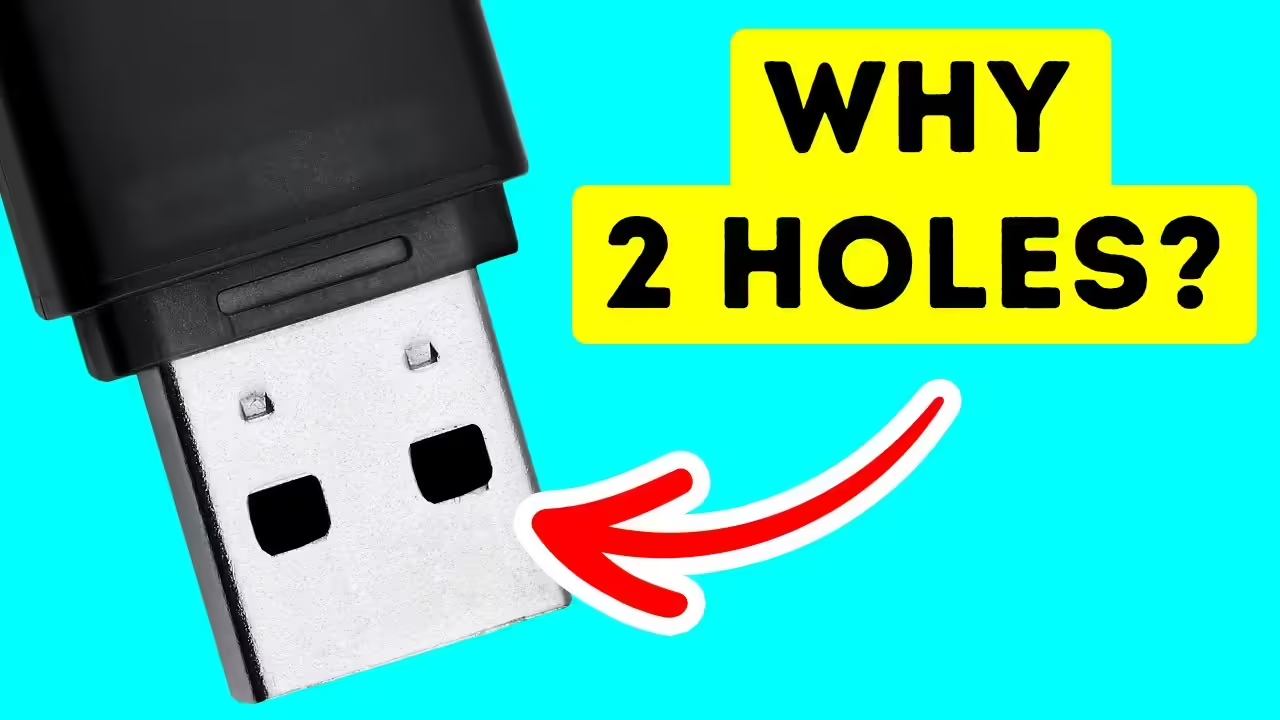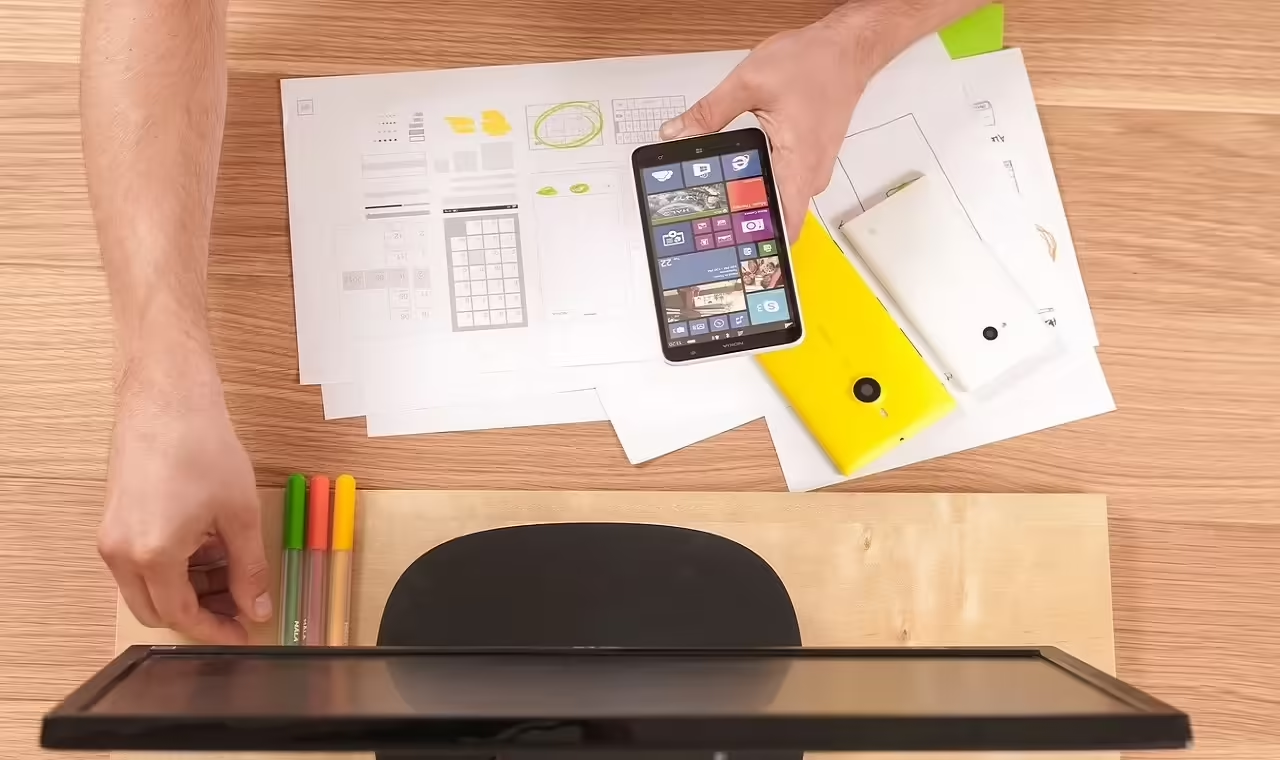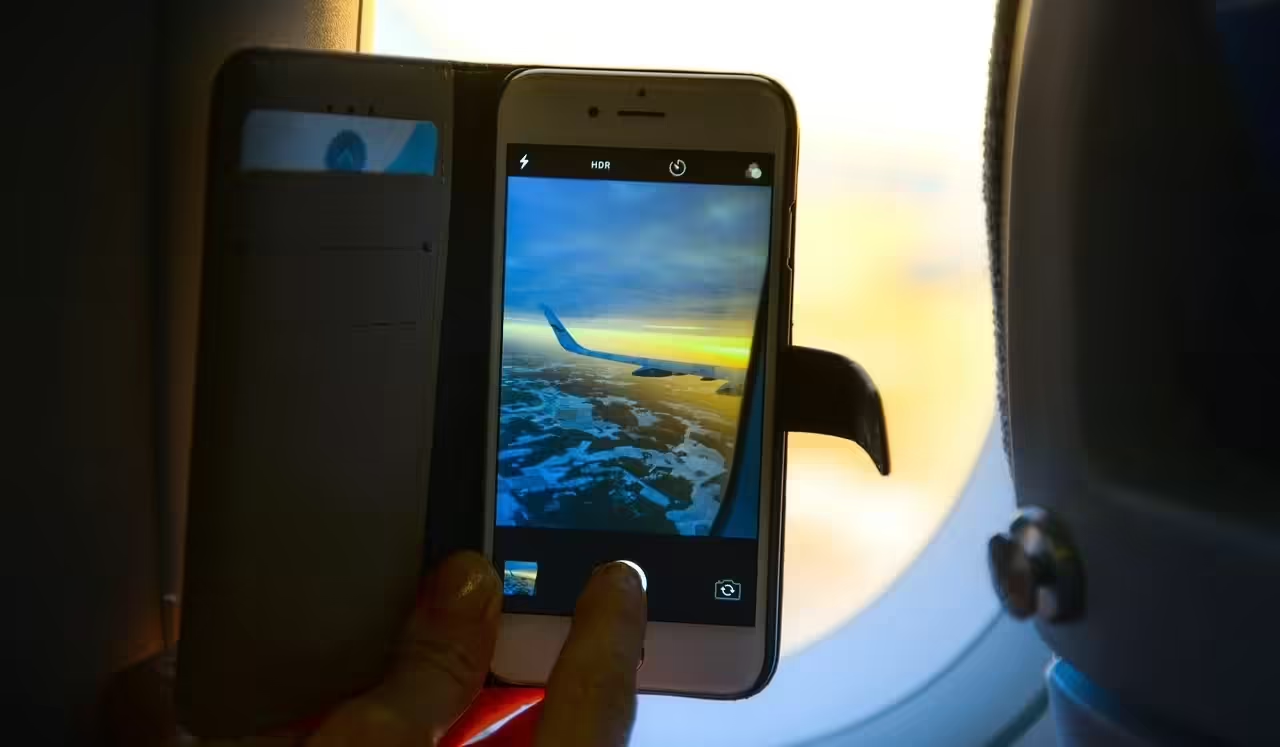Technological Curiosities
Modern technology is full of fascinating details and peculiarities that often go unnoticed. From the devices we use daily to the hidden components in our hardware, there are countless secrets waiting to be discovered. In this article, we will explore some of these curiosities, revealing the reasons behind designs, hidden functions, and innovations that make our gadgets so amazing.
Prepare to be surprised by facts you never imagined about USBs, Ethernet cables, QR codes, and much more. Each section will take you on a journey through the history and evolution of technology, showing how small details can have a big impact on our daily lives. Join us on this exploration of the hidden side of modern technology!
The Mystery of the Two Holes in USBs
Surely, on more than one occasion, you have noticed the two small holes in the metal part of USB connectors. At first glance, they might seem like an insignificant detail, but these tiny holes have a very important purpose. In this article, we will uncover the mystery behind these holes and explore how they contribute to the functioning and design of USB connectors.
Function of the Holes in USB Connectors
The two holes allow USB connectors to fit securely into ports. Inside many USB ports, there are small bumps that fit into these holes. This ensures that the connector stays in place and does not accidentally disconnect, providing a stable and secure connection.
Facilitating the Manufacturing Process
During the manufacturing of USB cables, the two holes play a crucial role in the assembly process. These holes allow machines that assemble the cables to hold the connector precisely and place it correctly in its plastic casing. This detail simplifies and speeds up the mass production of USB cables.
Ventilation and Heat Reduction
Although not its primary function, the holes can also help with the ventilation of the connector. During prolonged use, some devices may generate heat. The holes allow for a slight airflow, helping to keep the connector’s temperature within safe limits.
History and Evolution of USB Design
Since its introduction in the 1990s, USB (Universal Serial Bus) has revolutionized the way we connect and use our electronic devices. The design of the USB connector has gone through several iterations, each improving aspects of speed, efficiency, and ease of use. However, the concept of the holes in connectors has remained constant, demonstrating its utility and effectiveness.
What If There Were No Holes?
Without these holes, USB connectors might not fit as securely into ports, leading to unstable connections and user frustration. Additionally, the production of USB cables would be more complex and costly, potentially affecting the final price for consumers.
Other Curious Details of USB
In addition to the holes, USB connectors are full of interesting design details. For example, did you know that the trapezoidal shape of the connector is designed to prevent you from inserting it backward? Although this issue has been addressed with the arrival of USB-C, which is reversible, earlier models used the shape to guide the connector correctly into the port.
The Evolution of USB: From 1.0 to Type-C
A Journey Through the History and Advances of USB
USB (Universal Serial Bus) is one of the most revolutionary interfaces in the history of computing and technology. Since its creation, it has evolved significantly, transforming the way we connect and use devices.
USB 1.0: The Beginning of a Revolution (1996)
The USB 1.0 standard was introduced in 1996 by a consortium of companies led by Intel. This first version had a maximum transfer speed of 12 Mbps (Megabits per second) and was designed primarily to connect peripheral devices such as keyboards, mice, and printers to computers. The main innovation of USB 1.0 was its ability to simplify device connections, eliminating the need for multiple cables and ports.
Key Features:
Speed: 12 Mbps
Number of Pins: 4
Compatibility: Allowed connecting up to 127 devices through a single port.
USB 2.0: Faster Speeds and Greater Versatility (2000)
The arrival of USB 2.0 in 2000 marked a significant advancement in terms of speed and functionality. Known as “High-Speed USB,” this version increased the data transfer speed to 480 Mbps, facilitating the connection of devices that required higher bandwidth, such as digital cameras and external hard drives.
Key Features:
Speed: 480 Mbps
Number of Pins: 4 (similar to USB 1.0)
Compatibility: Maintained compatibility with USB 1.0 devices.
USB 3.0: A Major Leap in Speed and Efficiency (2008)
USB 3.0, introduced in 2008, represented a significant advancement in terms of speed and energy efficiency. Known as “SuperSpeed USB,” USB 3.0 offered a transfer speed of up to 5 Gbps (Gigabits per second), allowing the connection of high-performance devices such as external storage units and high-definition video devices.
Key Features:
Speed: 5 Gbps
Number of Pins: 9 (new design to support higher speeds)
Compatibility: Backward compatible with USB 2.0.
USB 3.1: Higher Speed and New Connectors (2013)
USB 3.1, launched in 2013, brought improvements in transfer speed and introduced the new Type-C connector. USB 3.1 offered speeds of up to 10 Gbps and improvements in energy efficiency. The new Type-C connector, which became standard in this version, was reversible, meaning users could connect the cable without worrying about orientation.
Key Features:
Speed: 10 Gbps
Number of Pins: 24 (Type-C connector)
Compatibility: Backward compatible and supports Power Delivery.
USB 3.2: Higher Speed and Flexibility (2017)
USB 3.2, released in 2017, introduced new capabilities to further increase transfer speeds. With speeds of up to 20 Gbps, USB 3.2 used multiple data lanes to achieve these speeds, improving efficiency and overall performance.
Key Features:
Speed: 20 Gbps
Number of Pins: 24 (Type-C connector)
Compatibility: Maintains backward compatibility and supports parallel data transfer.
USB4: The Latest Evolution (2019)
USB4, introduced in 2019, consolidated and further improved USB capabilities. Based on Thunderbolt 3 protocol, USB4 offers speeds of up to 40 Gbps and is fully compatible with USB 3.x and Thunderbolt 3. USB4 also uses the Type-C connector, promoting greater interoperability and simplification in device design.
Key Features:
Speed: 40 Gbps
Number of Pins: 24 (Type-C connector)
Compatibility: Backward compatible, Thunderbolt 3, and supports data transfer, video, and power delivery.
The History Behind the Iconic Power Symbol
The power/standby symbol, a familiar icon on almost all electronic devices, is one of the most universal elements in modern technology. But have you ever wondered where this symbol comes from and what it really means?
The Design of the Symbol
The power/standby symbol is a circle with a vertical line inside it. This seemingly simple design has a history that reflects the evolution of technology and interface design.
Origins in Electronics
The symbol has its roots in electronics and engineering. The circle represents a “switch” or “circuit breaker” in electrical diagrams, and the vertical line inside the circle represents the switch’s position. This design was used on control panels of electronic and electrical equipment since the mid-20th century.
Simplicity and Universality
In the 1970s, the power/standby symbol was standardized for the computer and electronics industry. It was chosen for its simplicity and its ability to be easily recognized and understood worldwide. The simplicity of the design makes the symbol universally understandable, facilitating the identification of power and standby functions across a wide range of devices.
Meaning of the Symbol
The power/standby symbol has a deeper meaning than it might appear at first glance:
On
The vertical line inside the circle represents the “on” position in a switch. On most devices, pressing the button with the power/standby symbol activates the device and starts it up. The line symbolizes the complete connection of an electrical circuit, indicating that power is flowing.
Off
The symbol is also used to represent the off function on many devices. In the off position, the switch is in the opposite position, where the electrical circuit is open and power does not flow. This may not be explicitly indicated in the symbol, but the general interpretation is that the device is disconnected from the power source.
The Evolution of the Symbol
Over time, the power/standby symbol has evolved and been integrated into various contexts:
International Standards
In 1988, the International Electrotechnical Commission (IEC) officially adopted the power/standby symbol as part of its standard for power switches. This standardization helped consolidate the symbol as a universally recognized icon in technology.
Modern Uses
Today, the power/standby symbol is found on virtually all electronic devices, from computers and televisions to appliances and office equipment. Its presence on devices is a constant that provides users with an intuitive way to control the power and standby functions.
QR Codes: The Evolution of Barcode Technology
QR codes, or Quick Response codes, have become a ubiquitous element in our daily lives. From product packaging to business cards and advertising, these codes have revolutionized how we access and share information.
The Origins of QR Codes
QR codes were invented in 1994 by Denso Wave, a subsidiary of Toyota, as part of a project to improve inventory management in the automotive industry. The technology was developed by Masahiro Hara and his team to create a code that could be read quickly and accurately, even when damaged or obscured.
Key Features of QR Codes:
Quick Response: QR codes were designed to be read quickly by scanners, making them ideal for applications requiring fast data access.
High Capacity: QR codes can store a large amount of data compared to traditional barcodes, allowing for more complex information to be encoded.
Error Correction: QR codes include error correction capabilities, which means they can still be read even if part of the code is damaged or obscured.
The Adoption and Expansion of QR Codes
Initially, QR codes were used primarily in the automotive industry for tracking parts and managing inventory. However, their versatility and efficiency led to their adoption in various other fields.
The Growth of QR Codes in Marketing
In the early 2000s, QR codes began to gain popularity in marketing and advertising. Businesses started using QR codes on product packaging, posters, and advertisements to provide consumers with quick access to additional information, promotional offers, and online content.
QR Codes in the Digital Age
With the rise of smartphones and mobile technology, QR codes have become even more prevalent. Modern smartphones are equipped with built-in cameras that can easily scan QR codes, making them an accessible tool for consumers and businesses alike.
The Impact of QR Codes
QR codes have transformed how we interact with information. They provide a quick and easy way to access URLs, contact information, and promotional content. Their use has streamlined various processes, from checking in at events to making payments.
Integration with Digital Platforms
QR codes have integrated seamlessly with digital platforms, enabling features like mobile payments, loyalty programs, and digital ticketing. This integration has made QR codes a valuable tool in both consumer and business environments.
The Future of QR Codes
The technology behind QR codes continues to evolve. Innovations such as dynamic QR codes, which can be updated after printing, and the integration of QR codes with augmented reality (AR) are expanding their capabilities and applications.
Sustainability and Adaptability
As technology advances, QR codes are expected to continue playing a significant role in communication and information sharing. Their adaptability and ability to provide instant access to digital content make them a versatile and enduring technology.








